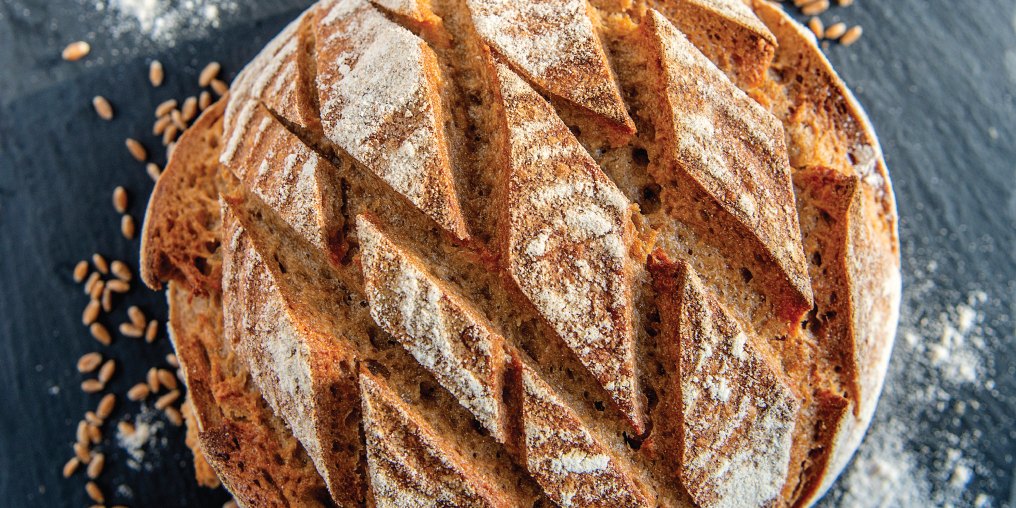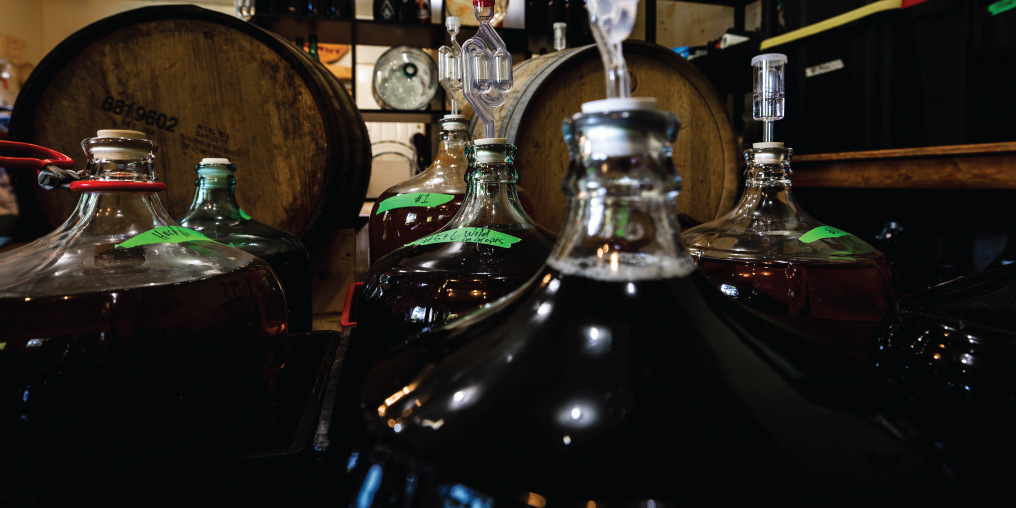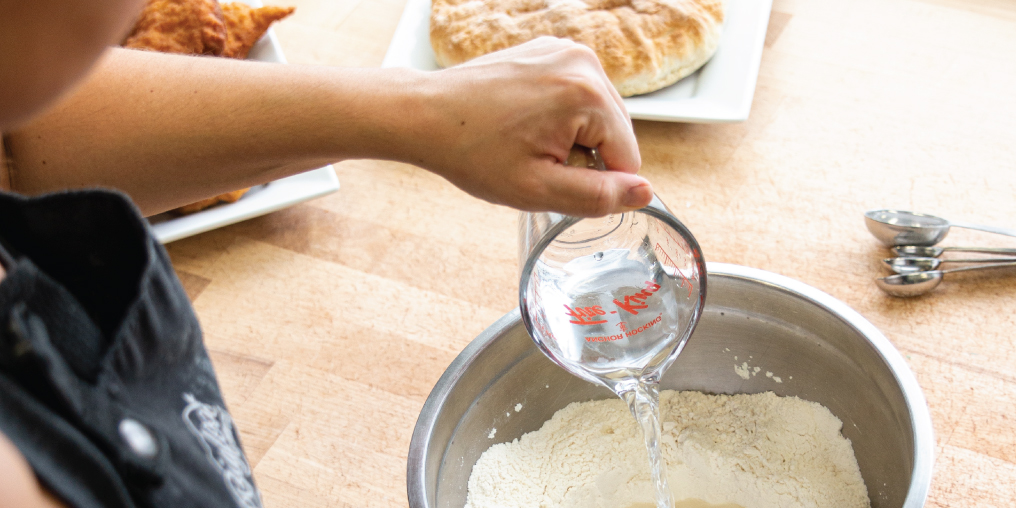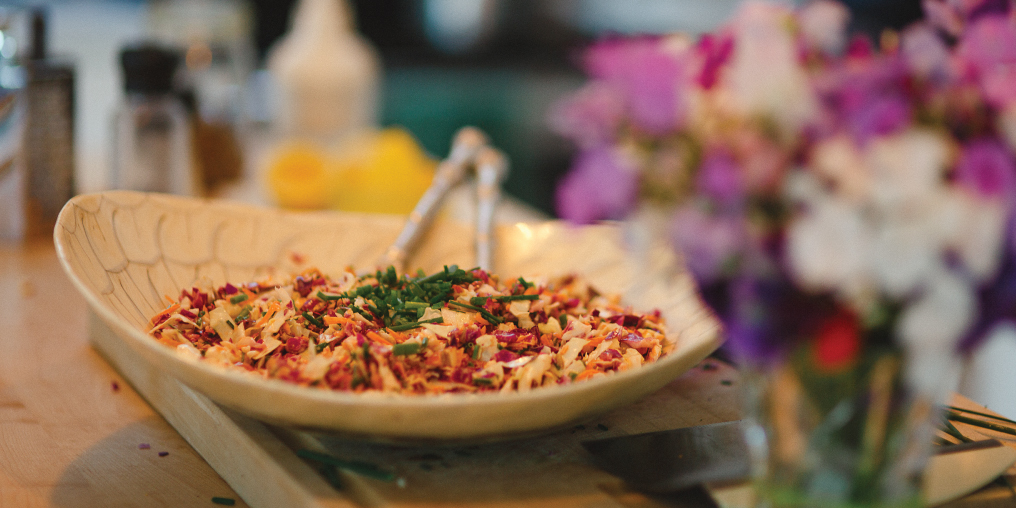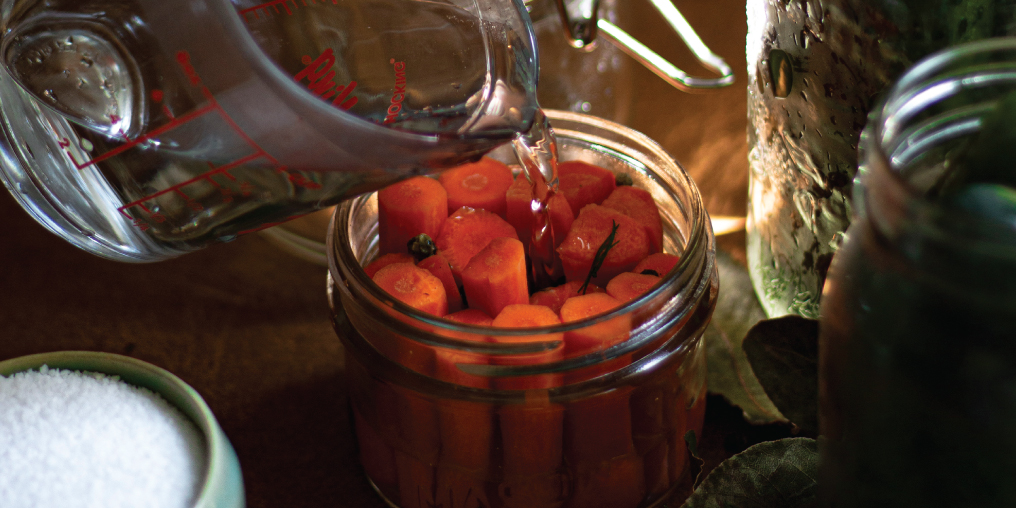The dough stretches and resists my hands as I roll it on the floured surface. As I work, the aroma of yeast spreads through the kitchen. The dough comes alive as the yeast mixes with the carbs and begins eating up the oxygen. After kneading, the dough is soft, smooth, and elastic. Bread making is not for the impatient. It takes time to mix and condition the dough; to wait for it to rise and proof, and more time for it to bake and cool before you tear through the crust and sink into that slightly sweet, soft inner space. Good things can’t be rushed.
Some of my fondest childhood memories involve baking bread with my Gram. We’d spend all day in aprons with CBC Radio on in the background. Gram shared stories and I listened to her every word. As years passed, our conversations flowed freely about most anything, connecting generations over a little flour, salt, water, and yeast.
Any way you slice it, bread connects people—the farmer to the miller, the miller to the baker, and the baker to the community. And despite the modern anti-gluten trend that has many standing firmly against the grain, bread remains an important staple in many diets around the world.
Bread is older than metal. It’s long been discovered that our ancestors were eating and baking flat breads before the Bronze Age—and quite possibly during the Stone Age with evidence of Neolithic grinding stones used to process grains. There’s no doubt that the ancient Egyptians discovered and used the process of baking naturally leavened bread (sourdough). Wall paintings and the analyses of desiccated bread loaves are proof that sourdough has long been a healthy form of fuel for humans. Until the development of commercial yeasts, all leavened bread was crafted from naturally occurring yeasts.
Yeast is wild and free! It’s found everywhere—in the air, on our skin, on our food, and in our homes. When a mixture of flour and water is left to ferment for an extended period of time, it attracts wild yeast that starts to nibble on the naturally occurring sugars. Bread made from wild yeast is characteristically tangy and takes on flavour from its surroundings. A starter contributes to the bread’s texture, provides health advantages not present in other breads, and increases shelf life. Naturally leavened bread requires time, but it’s time that allows the natural yeasts and bacteria to slowly break down the starches that are hard for our bodies to digest. Many people with a mild sensitivity to gluten are able to consume sourdough breads since much of the starchy gluten has broken down before consumption.
Research shows that the influx of non-celiac gluten sensitivity isn’t actually the fault of gluten—it’s the species of modern wheat consumed today. Decades of interbreeding grain species have changed the fundamental protein sequence of modern wheat, creating engineered proteins that an increasing number of people can’t digest.
Luckily, we have ancient grains that are “modern wheat free.” Many farmers, millers and bakers are using past techniques to create a healthy future for heritage grains, organic grains, and grain products. The art and craftsmanship of bread making is alive and well, shifting the way modern consumers view gluten. These breads are shaped by hand and crafted in small batches, without the added sugars and preservatives of many breads commonly found on grocery store shelves.
The simple alchemy of bread makes it easy to knead into the lives of those who take the time to bake it. For those who prefer to buy it, there are many local bakeries that are folding Old World techniques and ingredients into present conditions. If you’re on the hunt for mouthwatering loaves of bread in the Comox Valley, you’re about to be delighted.
Handcrafted artisan breads can be found at Cakebread Artisan Bakery. Following time-honoured traditions, every loaf is created from scratch with 100% certified organic flours and other top-quality ingredients.
Dedicated to the slower things in life, every loaf of Honey Grove sourdough is naturally fermented. Their extensive selection of Old World breads can be found at the bakery in Courtenay, and at the Comox Valley Farmers’ Market. You will find a wonderful selection of savoury and sweetened loaves that have been carefully crafted with 100% freshly milled, organic Canadian flours.
A wide array of freshly baked ancient grain breads can be found at True Grain Bread in Courtenay. True Grain is home to passionate, skilled bakers that take the time to hand-scale and carefully craft small batches of bread. Inspired by traditional ways, they connect the farmer, the miller, and the community using only BC farmed and milled organic flours. Be sure to try a loaf of their signature Red Fife Sourdough—it’s made from Canada’s oldest surviving wheat.
A freshly baked loaf is one of life’s simplest pleasures. The many benefits yielded from an increase in Old World techniques and ingredients provide us with one more reason to break bread.

